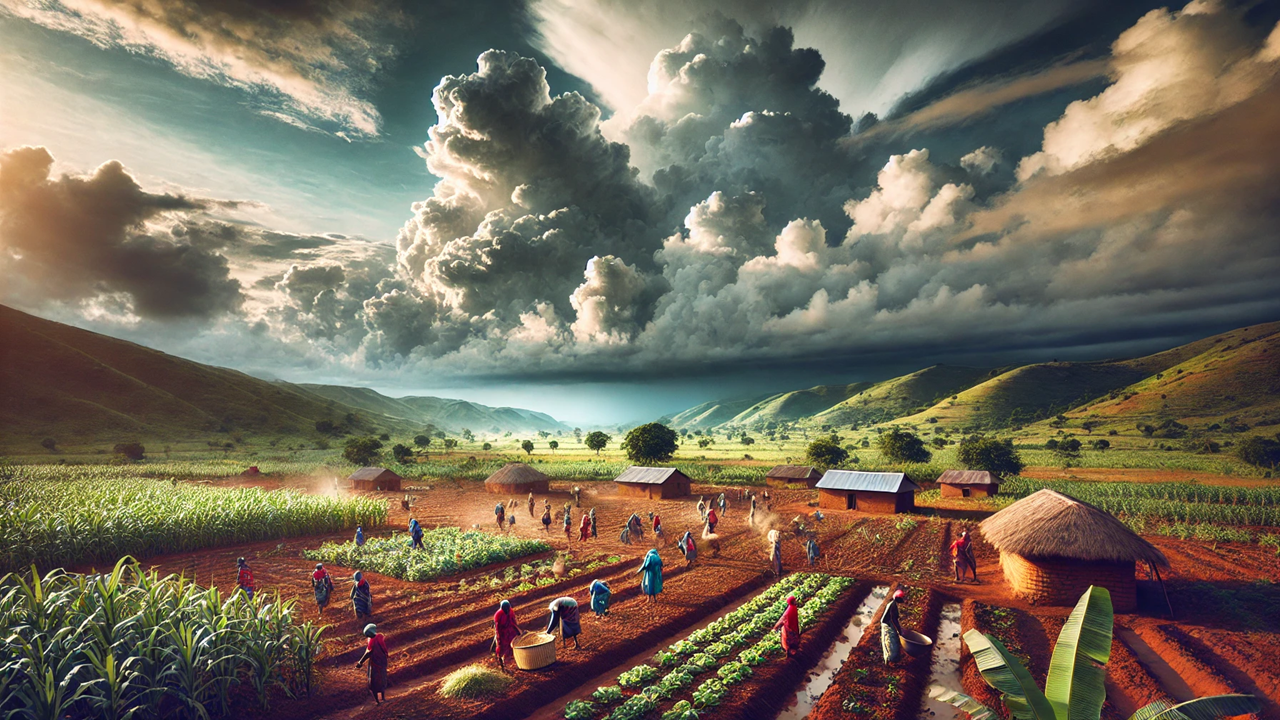CAR's Climate Resilience Blueprint: A Path to Sustainable Growth
The Central African Republic Country Climate and Development Report, published by the World Bank, explores the interlinked challenges of fragility, climate change, and development in CAR. It outlines strategic recommendations for resilience, focusing on infrastructure, renewable energy, governance reforms, and community engagement. The report emphasizes a holistic vision for sustainable growth through integrated funding, policy reforms, and innovative solutions.

The Central African Republic Country Climate and Development Report (CCDR), published by the World Bank, presents an urgent call to action for addressing the intertwined challenges of climate change, development, and fragility in the Central African Republic (CAR). The report underscores a compelling narrative: a country grappling with a vicious cycle where fragile governance, socio-economic disparities, and climate vulnerabilities reinforce each other, stalling progress and resilience.
A Triple Threat: Fragility, Climate Change, and Development
The CCDR highlights the fragile state of CAR, where governance inefficiencies and limited institutional capacity compound climate vulnerabilities. Erratic weather patterns, including floods and droughts, devastate agricultural outputs, disrupt water security, and exacerbate urban flooding and erosion. These challenges significantly threaten food security and livelihoods, particularly in rural areas dependent on agriculture. In urban settings, climate risks disrupt infrastructure and economic activity, creating ripple effects across communities.
The report paints a stark picture of the "development-fragility-climate nexus," wherein progress in one area is often undermined by setbacks in another. For example, fragility limits effective climate action, while climate-induced shocks deepen poverty and hinder socio-economic development.
Recommendations for Building Resilience
The report proposes a roadmap for resilience through nine strategic recommendations, categorized into three core areas: direct actions, enabling environments, and support systems.
1. Direct Actions To mitigate the immediate risks, the report calls for investments in resilient infrastructure, particularly in urban areas prone to flooding. Renewable energy also takes center stage as a transformative solution to electrify rural areas, reduce carbon emissions, and enhance sustainable development.
2. Enabling Environments Long-term resilience requires robust policy reforms and institutional strengthening. The CCDR emphasizes the need for climate-informed urban planning and land use policies that integrate environmental sustainability. Empowering local governments and communities to implement localized climate policies will ensure that solutions align with on-the-ground realities.
3. Support Systems Capacity-building through national climate education initiatives is crucial. Raising awareness and fostering community engagement in decision-making processes will enhance cultural relevance and accountability. These measures aim to create a shared vision for resilience that transcends socio-political divides.
Sectoral Focus: Agriculture, Urban Development, and Finance
The report dives into sector-specific strategies for fostering resilience:
Agriculture and Water: Implementing climate-smart agricultural practices, such as agroforestry and soil conservation, can boost productivity while preserving natural resources.
Urban Development: Resilient urban planning, green infrastructure, and waste management investments are key to mitigating disaster risks and promoting sustainable growth.
Macroeconomic Policies: Diversifying CAR’s economy and introducing fiscal reforms will help alleviate poverty and attract climate financing to fund adaptation efforts.
Path to Resilience and Sustainability
The CCDR emphasizes an integrated approach to tackling CAR’s challenges. Aligning development funding with climate finance and governance reforms is essential to breaking the cycle of fragility. The report proposes a phased implementation plan: prioritize infrastructure resilience now while scaling long-term investments in green development and governance over time.
Financing this transformation requires innovative solutions, including international aid, concessional loans, and community-based funding mechanisms. These approaches ensure inclusive and sustainable progress while addressing CAR’s unique socio-economic and environmental context.
A Holistic Vision for the Future
The CCDR concludes with a bold vision for CAR: a shift toward climate-adapted development that breaks the fragility cycle, fosters inclusive growth, and builds resilience through innovation and international cooperation. By prioritizing sustainable solutions and empowering communities, CAR can navigate its developmental and environmental challenges, paving the way for a more resilient and equitable future.
The Central African Republic Country Climate and Development Report, published by the World Bank, serves as a critical guide for policymakers, stakeholders, and international partners. It outlines the urgent need for coordinated action to tackle the complex interplay of fragility, climate change, and development, offering a roadmap to sustainable growth.
- FIRST PUBLISHED IN:
- Devdiscourse










